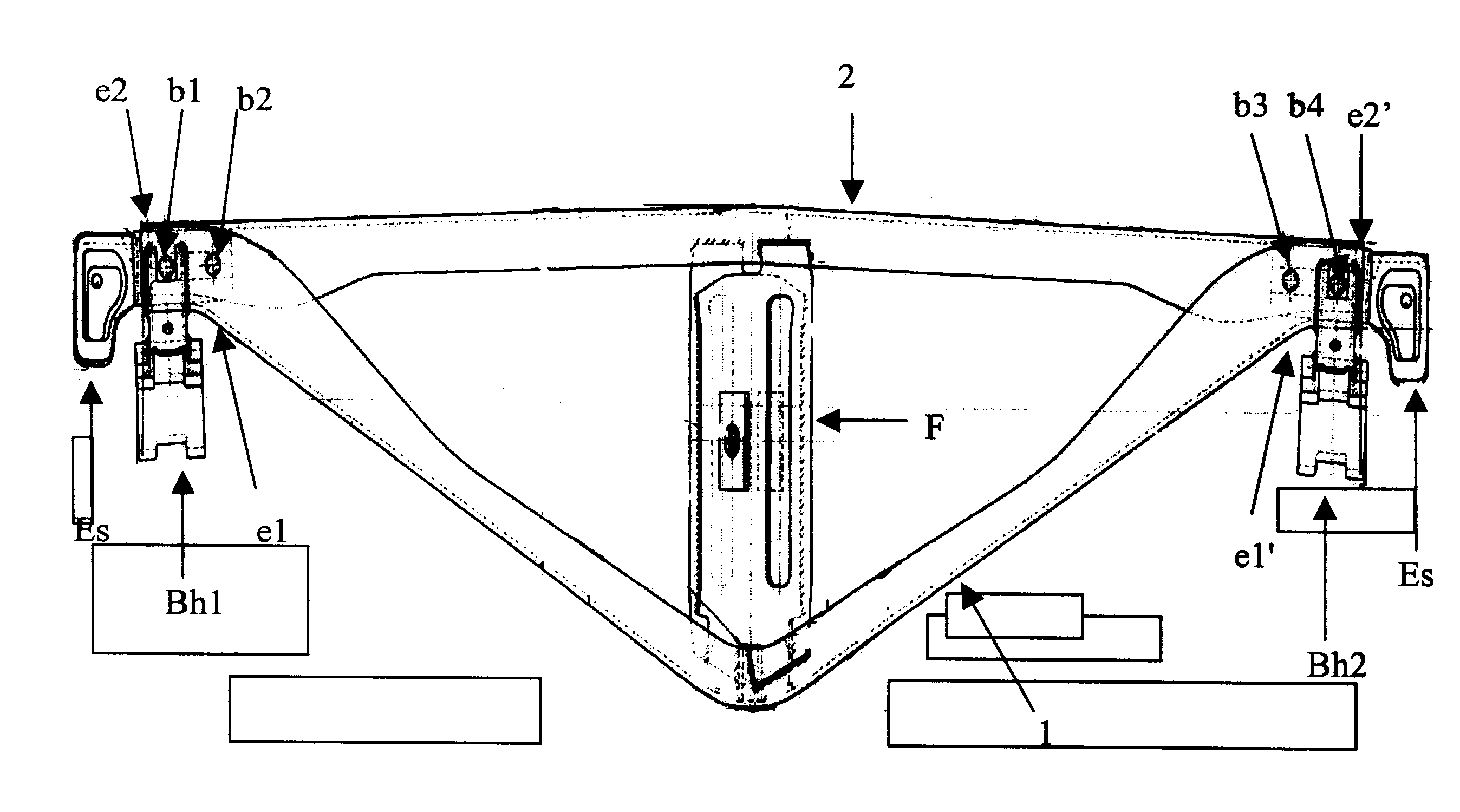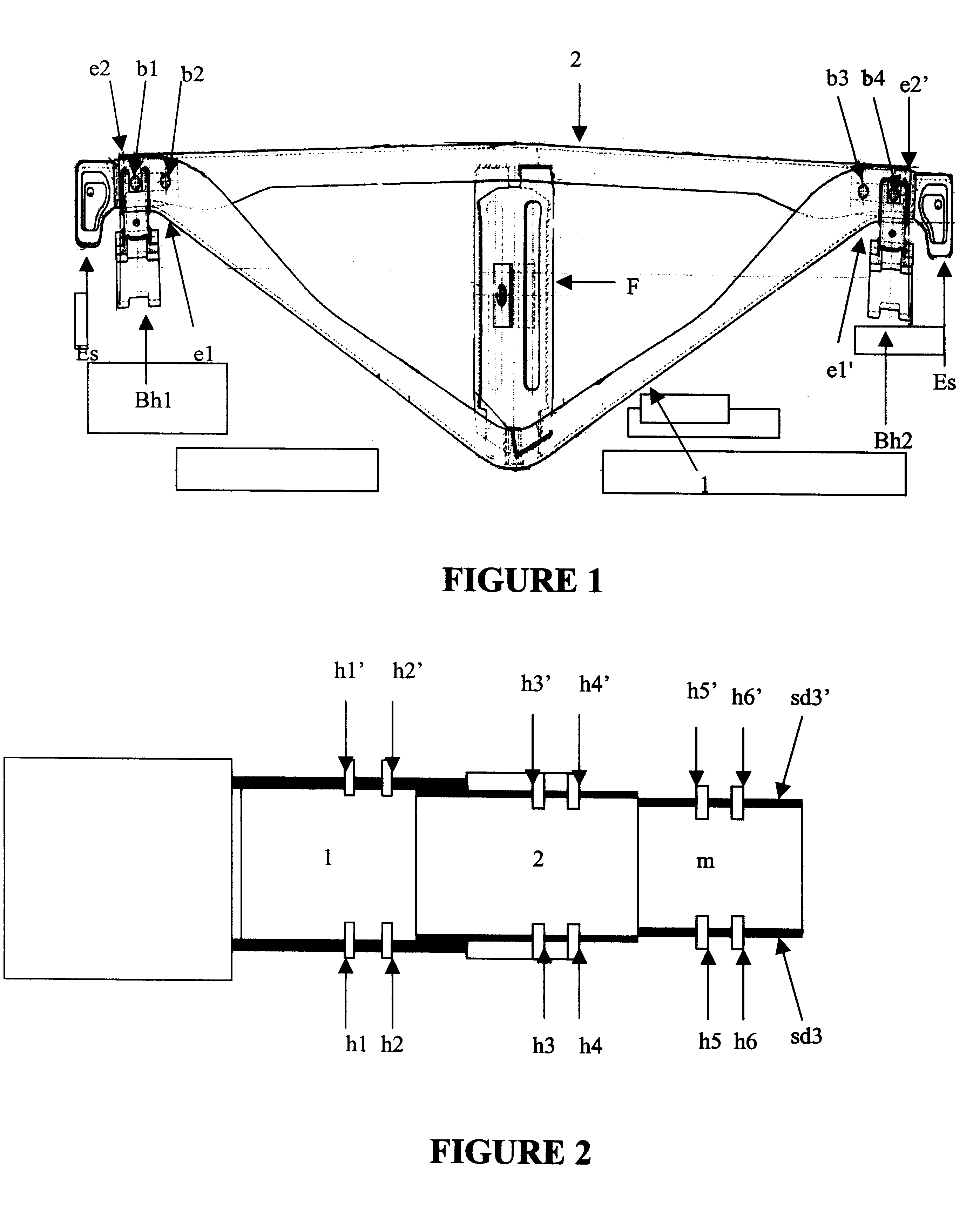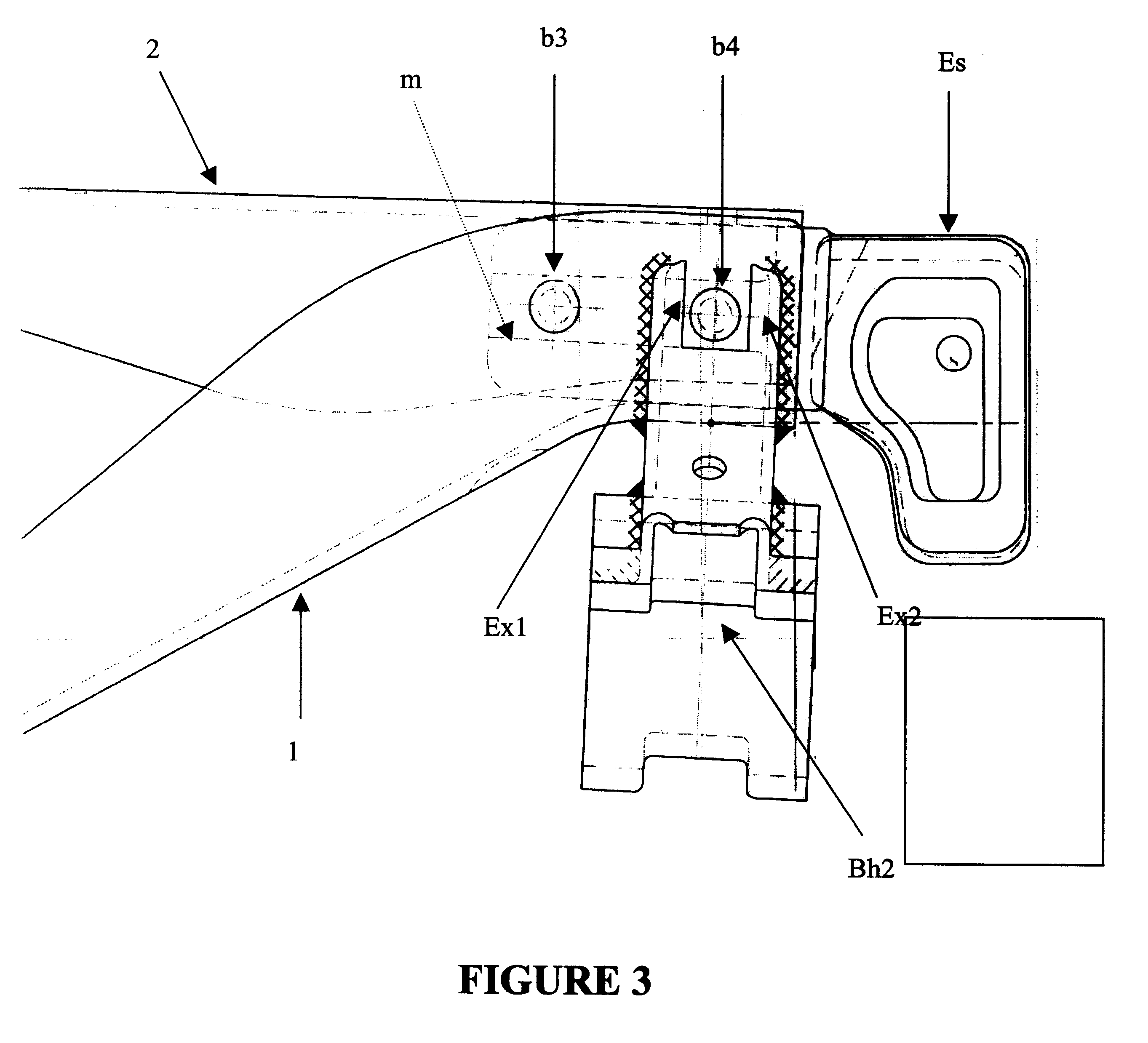Brake beam structure
a technology of brake beams and beams, which is applied in the direction of brake systems, railway components, transportation and packaging, etc., can solve the problems of rigidity of the same, high stress on certain parts and elements of the brake beam, and the same vulnerability to breakag
- Summary
- Abstract
- Description
- Claims
- Application Information
AI Technical Summary
Benefits of technology
Problems solved by technology
Method used
Image
Examples
Embodiment Construction
.
The brake beam of the present invention, will now be initially described in accordance with a preferred embodiment thereof, and making reference to FIGS. 1 to 5, comprises:
a "V" shaped tension member 1 having a first end e1 and a second end e1' having a channel shaped cross section including a lower wall lw1 which turns parallel to an horizontal axis at the ends of the tension member 1, and two upwardly projecting side walls sd1, sd1', each depending from an edge of the lower wall lw1' and each end having two pairs of opposite holes h1, h1', h2, h2' each longitudinally placed at each side wall sd1, sd1' at each end e1, e1' of the "v" shaped tension member. Said projecting side walls sd1, sd1', having a progressive widening at the ends e1, e1' of the tension member.
a compression member 2, having a first end e2 and a second end e2', each of which is placed inside the housing of the tension member channel shaped cross section at the ends e1, e1' of the tension member, said compression...
PUM
 Login to View More
Login to View More Abstract
Description
Claims
Application Information
 Login to View More
Login to View More - R&D
- Intellectual Property
- Life Sciences
- Materials
- Tech Scout
- Unparalleled Data Quality
- Higher Quality Content
- 60% Fewer Hallucinations
Browse by: Latest US Patents, China's latest patents, Technical Efficacy Thesaurus, Application Domain, Technology Topic, Popular Technical Reports.
© 2025 PatSnap. All rights reserved.Legal|Privacy policy|Modern Slavery Act Transparency Statement|Sitemap|About US| Contact US: help@patsnap.com



